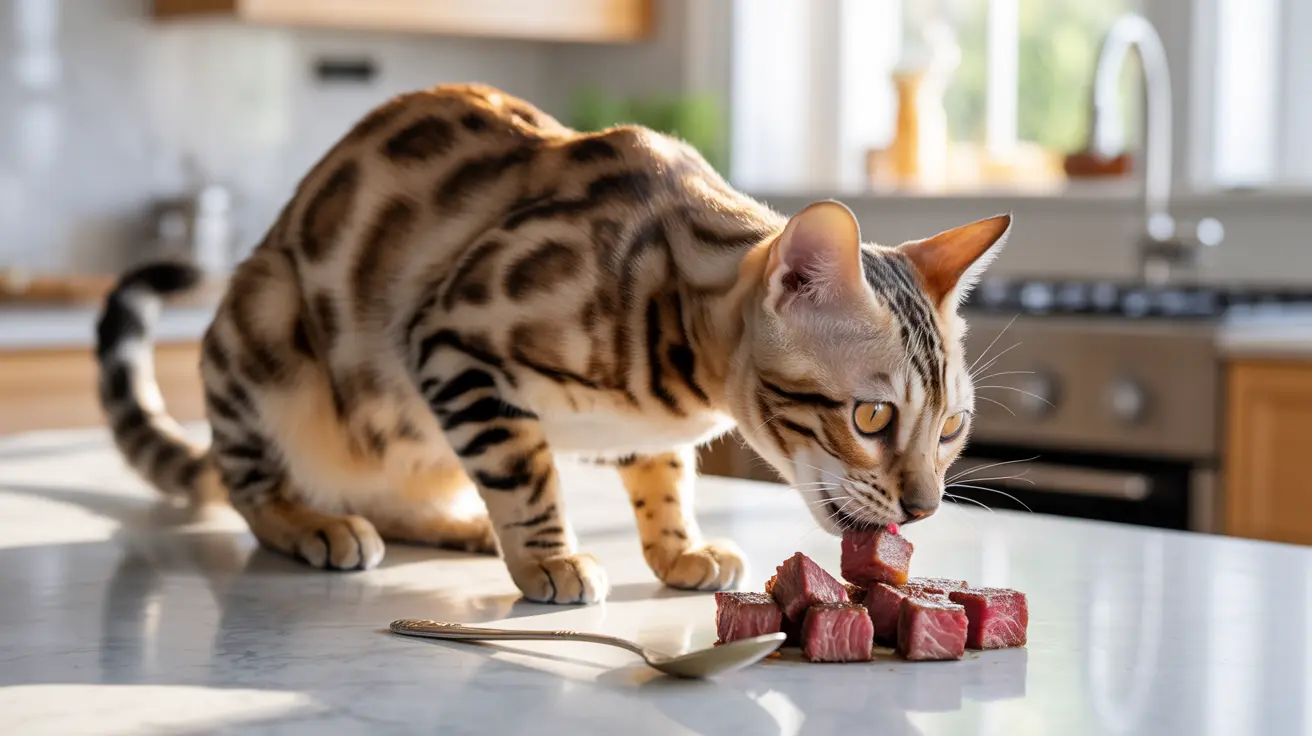The Nutritional Benefits of Steak for Cats
Steak provides several essential nutrients that cats need for optimal health. As obligate carnivores, cats require animal-based protein, which steak delivers in abundance. This protein is crucial for maintaining muscle mass, supporting organ function, and ensuring overall health.
- Taurine: An essential amino acid for heart and eye health
- Iron: Vital for healthy blood cell production
- B vitamins: Important for energy metabolism
- Zinc: Supports immune system function
- Essential fatty acids: Promote healthy skin and coat
Safe Preparation Methods
When preparing steak for your cat, follow these essential guidelines:
Cooking Requirements
- Cook the meat thoroughly to eliminate harmful bacteria
- Avoid all seasonings, including salt and pepper
- Don't use oils or butter in preparation
- Let the steak cool completely before serving
- Cut into small, manageable pieces
Portion Control
Limit steak to small portions - typically no more than 1-2 small cubes (about 1 inch each) per serving. This should be considered a treat, not a meal replacement.
Potential Risks and Concerns
While steak can be a safe treat for cats, there are several important considerations:
Health Risks
- Raw meat may contain harmful bacteria and parasites
- Excess fat can lead to pancreatitis
- Too much protein can strain kidneys in cats with existing conditions
- Bones can pose choking hazards or cause internal injuries
Dietary Balance
Feeding too much steak can disrupt the balanced nutrition provided by quality cat food. Commercial cat foods are specifically formulated to meet all of your cat's nutritional needs in the right proportions.
When to Avoid Feeding Steak
Some cats should not be given steak, including:
- Cats with kidney disease or other health conditions
- Overweight cats
- Cats on prescription diets
- Those with known meat allergies or sensitivities
Frequently Asked Questions
Can cats safely eat steak and how often should it be given as a treat?
Yes, cats can safely eat steak when it's properly prepared. Offer it as an occasional treat, no more than once or twice a week, in small portions (1-2 small cubes).
What is the best way to prepare steak for my cat to avoid health risks?
Cook the steak thoroughly without any seasonings, oils, or butter. Remove all fat and bones, let it cool completely, and cut it into small, manageable pieces.
How much steak can I feed my cat without causing obesity or digestive problems?
Limit portions to 1-2 small cubes (about 1 inch each) per serving. This should represent no more than 10% of your cat's daily caloric intake.
Are there any risks associated with feeding raw steak to cats?
Raw steak can contain harmful bacteria and parasites that may cause serious illness. Unless specifically recommended by your veterinarian, it's safer to feed cooked steak.
Why should steak never replace a balanced commercial cat food diet?
Commercial cat foods are specifically formulated to provide all essential nutrients in the right proportions. Steak alone lacks many vital nutrients cats need for optimal health and should only be given as a supplement to a complete diet.
Conclusion
While steak can be a safe and enjoyable treat for cats, it should be offered in moderation and prepared properly. Always maintain your cat's primary diet of high-quality commercial cat food, and consult with your veterinarian before making any significant changes to their diet.






